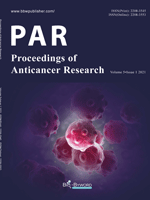Abstract
Acid regurgitation is a common symptom in digestive system diseases which is mainly caused by emotions, diet, and other factors. It is related to gastroesophageal reflux disease, chronic gastritis, and other diseases in Western medicine. According to modern medical research, acid reflux is related to Helicobacter pylori (HP) infection, weak effect of anti-reflux barrier, decreased clearance of esophageal acid, dysfunction of esophageal mucosal barrier, strong stimulation of reflux on esophageal mucosal wall, and other factors [1]. It can be divided into four types which are heat, cold, food stagnation, and yin deficiency. It is often accompanied by vomiting, heartburn, stomachache, and other symptoms. Clinically, it is a mixture of cold and heat, as well as excess and deficiency. Professor Du’s self-made method of “first soothing, second reducing, and third harmonizing” (soothing liver and stomach, relieving stomach qi, and neutralizing stomach acid) is used to treat both, symptoms and the root causes. The commonly used prescriptions are left-running metal pill, cuttlefish bone and fritillaria powder, calcined ark shell, oyster shell, etc.
References
Li L, Sun Z, Liang G, 2018, Research Progress in the Treatment of Gastroesophageal Reflux Disease with Traditional Chinese Medicine. Journal of Emergency in Traditional Chinese Medicine, 27(4): 737-9.
Guo Y, Zhou W, Zhang J, et al., 2008, Study on the Protective Effect of Cuttlebone Polysaccharide on Gastric Mucosa of Mice. Journal of Second Military Medical University, 29(11): 1328-32.
Zhang M, Shen Y, Zhu Z, et al., 1998, Anti-Ulcer and Analgesic Effects of Bulbus Fritillariae Thunbergii. Northwest Pharmaceutical Journal, (05): 208-9.
Xu S, Yan Y, Tao M, et al., 2020, Effects of Different Processing Conditions and Methods on the Types and Contents of Inorganic Elements in Ark Shell. Lishizhen Medicine and Materia Medica Research, 31(1): 103-5.
Fang H, Yan Y, Tao M, et al., 2018, Comparative Study on the Protective Effect of Ark Shell and Different Processed Products on Acute Gastric Ulcer in Rats. Pharmacol Clin Chin Mater Med, 34(6): 116-21.
Yan X, Zhang J, Zeng F, 2009, Determination and Analysis of Three Kinds of Oyster Mineral Elements. Chinese Journal of Basic Medicine in Traditional Chinese Medicine, 15(03): 218, 223.
Shi Z, Chen L, Jiang T, et al., 2020, Changes of Calcium Carbonate Content in Oysters Before and after Processing. Strait Pharmaceutical Journal, 32(09): 69-71.
